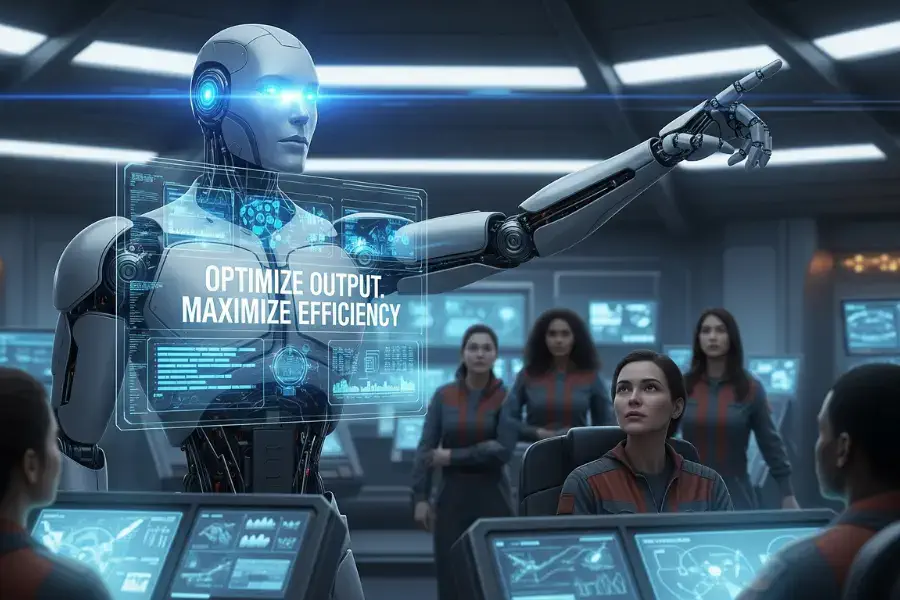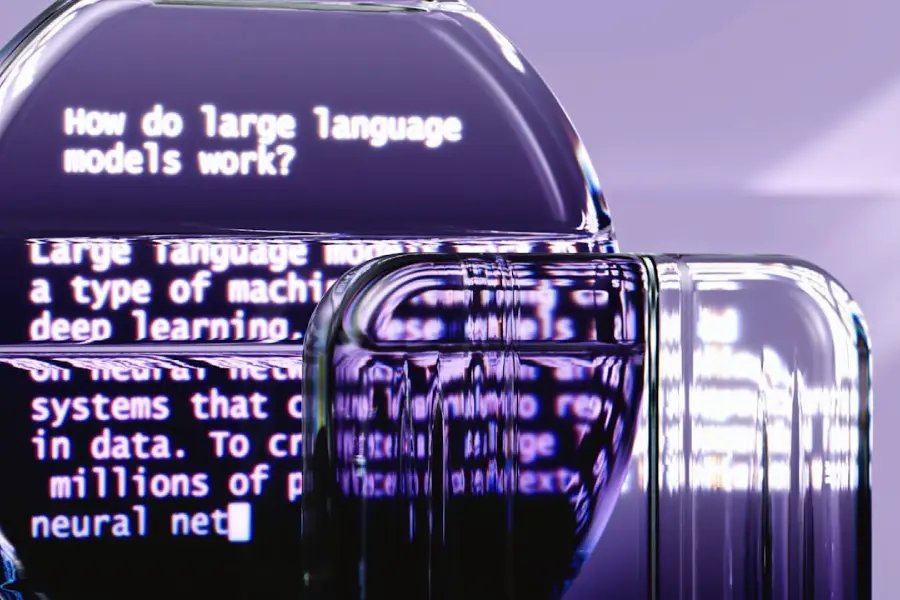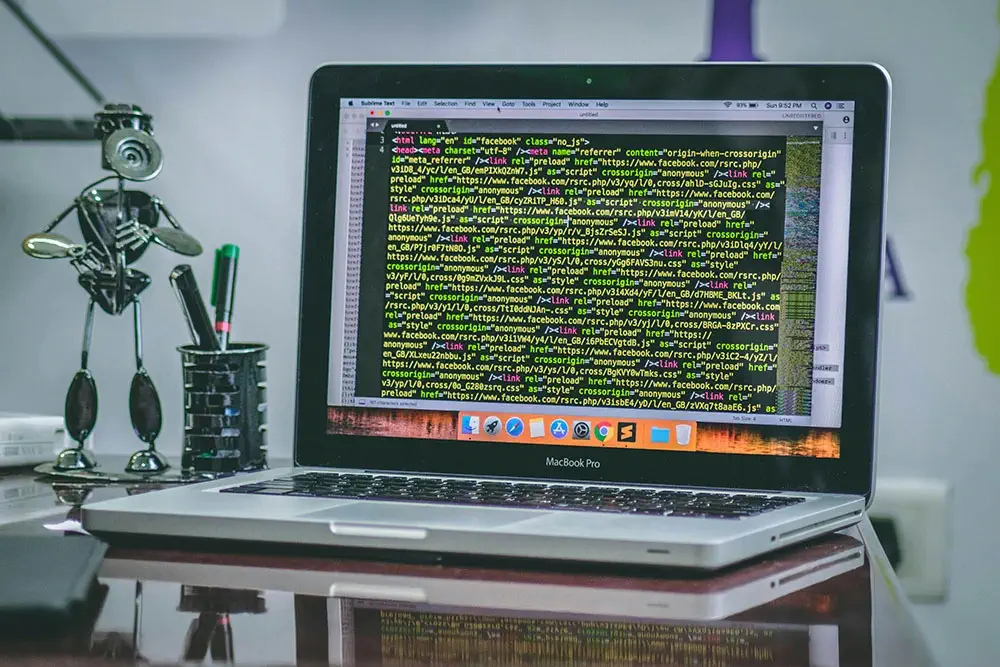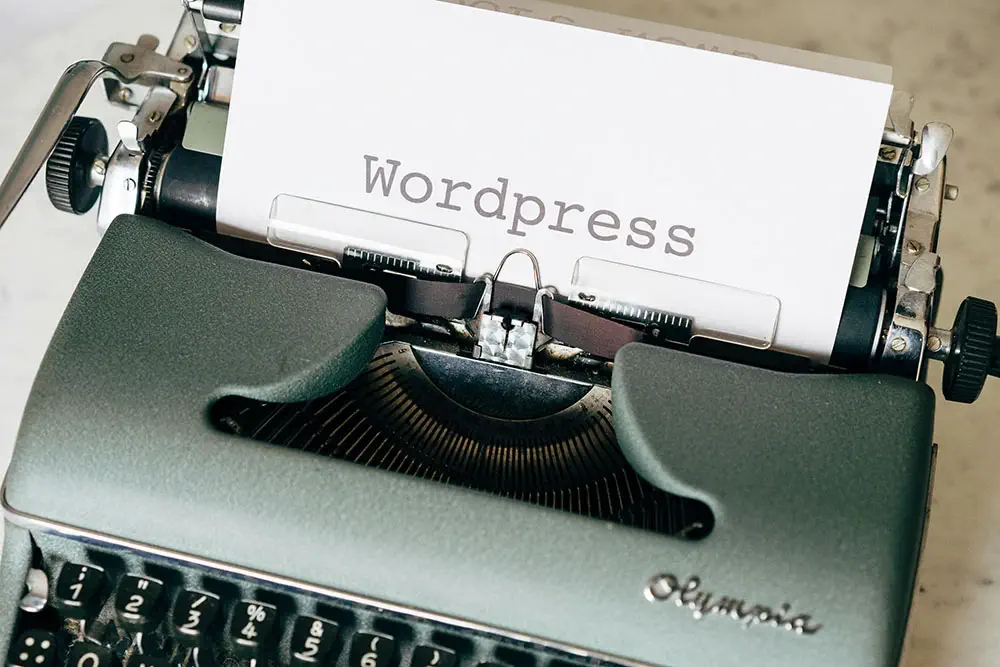· AIs · 11 min read
Is Your Career AI-Proof? A Look at 40 Jobs Undergoing the Biggest Changes
According to Microsoft research, jobs requiring physical work, human connection, and hands-on skills are the safest from AI replacement. These occupations, like dredge operators and surgical assistants, had the lowest AI applicability scores because current AI cannot perform their core physical and real-world tasks.

Main Points:
Core Finding
Jobs that are safest from AI replacement are those requiring physical work, direct human interaction, and hands-on skills.Study Methodology
The research analyzed nine months of data from 200,000 anonymized users of Microsoft’s Bing Copilot in 2024 to understand AI’s real-world impact. They measured “AI applicability scores” based on factors like how often AI is used for a task, its success rate, and its overall impact.AI as an Assistant
The study found that AI primarily acts as an assistant, augmenting human work rather than replacing it. In many cases, what users intended to do was different from what the AI actually did.Least Affected Jobs
The jobs with the lowest AI applicability scores are those that involve physical presence and manual labor, such as Dredge Operators, Surgical Assistants, Massage Therapists, Roofers, and Highway Maintenance Workers.Most Affected Jobs
Occupations with the highest AI applicability scores are knowledge-based and communication-focused roles, including Writers, Interpreters, Translators, and Sales Representatives. AI is most effective at tasks like information gathering, writing, and editing.Conclusion
High AI applicability does not mean job replacement - AI is more likely to transform how we work rather than eliminate the need for human workers entirely. The future belongs to those who can effectively collaborate with AI tools.
Microsoft has just published one of the largest real-world analyses¹ to date on how AI impacts jobs — and the results may surprise you. Instead of relying on predictions, researchers examined actual user interactions with Bing Copilot over a 9-month period in 2024 to see how AI is being used on the job — and where it still can’t compete with human abilities.
- Core Finding
Jobs requiring physical work, direct human interaction, and hands-on skills remain the most resilient against AI automation.
- Study Methodology
The research team reviewed 9 months of anonymized activity from over 200,000 users of Bing Copilot. From this, they developed “AI applicability scores” to evaluate how much AI can assist — or replace — human efforts across different occupations.
These scores were based on:
- Coverage: Frequency of AI use in tasks
- Completion Rate: How often AI completed tasks successfully
- Impact Scope: How much of a job AI could reasonably perform
The study compared what users intended to accomplish versus how the AI actually contributed — highlighting a crucial difference between assistance and full automation.
- Least Affected Jobs by AI
These roles were found to be least compatible with AI assistance due to their physical, manual, or interpersonal nature:
- Dredge Operators
- Bridge and Lock Tenders
- Water Treatment Plant Operators
- Foundry Mold and Coremakers
- Rail Maintenance Equipment Operators
- Pile Driver Operators
- Floor Sanders and Finishers
- Orderlies
- Motorboat Operators
- Logging Equipment Operators
- Paving and Surfacing Equipment Operators
- Housekeeping Cleaners
- Oil and Gas Roustabouts
- Roofers
- Gas Compressor Operators
- Roofer Helpers
- Tire Builders
- Surgical Assistants
- Massage Therapists
- Ophthalmic Medical Technicians
- Industrial Truck Operators
- Firefighter Supervisors
- Concrete Finishers
- Dishwashers
- Machine Feeders
- Packaging Machine Operators
- Medical Equipment Preparers
- Highway Maintenance Workers
- Production Worker Helpers
- Prosthodontists
- Tire Repairers
- Ship Engineers
- Automotive Glass Installers
- Oral Surgeons
- Misc. Plant/System Operators
- Embalmers
- Painter and Plasterer Helpers
- Hazardous Materials Removal Workers
- Nursing Assistants
- Phlebotomists
These professions require human presence, coordination, touch, or physical strength — all of which remain out of reach for current AI systems.
- Key Insights from the Research
AI Is an Assistant, Not a Replacement
In 4 out of 10 interactions, what users wanted differed from what AI delivered. This confirms AI’s primary role as a support tool, not a full replacement.Physical Work Stays Human
Jobs involving machines, tools, or bodies — whether lifting, cleaning, or healing — cannot be executed by AI. It may suggest what to do, but it cannot do the doing.Task Type Determines Success
- High AI performance: Writing, editing, research
- Low AI performance: Data visualization, analytics
- Takeaway: Satisfaction closely tracked task type and completion rate
Education Matters (Kind Of)
Jobs requiring a college degree had higher AI applicability (0.27 vs. 0.19), suggesting they involve more digital tasks. Still, wage levels didn’t correlate strongly with AI impact (only 0.07).
- Most Affected Jobs by AI
Occupations where AI made the biggest difference involved information handling and communication:
- Interpreters & Translators
- Writers & Authors
- Historians
- Salespeople
- Customer Service Representatives
- Educators and Clerks
Why? These roles often revolve around a set of core activities that align closely with what AI is designed to assist with:
Information lookup: These jobs frequently require finding, verifying, and synthesizing large amounts of information quickly and accurately. AI excels at scanning vast data sources, retrieving relevant facts, and presenting them in an accessible way — making it a valuable research companion.
Writing and editing: Whether it’s drafting reports, composing emails, creating content, or polishing text, these occupations involve a lot of written communication. AI tools can generate drafts, suggest improvements, and speed up the editing process, helping people express their ideas more clearly and efficiently.
Communicating and explaining ideas: Many of these jobs depend on translating complex information into understandable terms for diverse audiences. AI can help by generating clear explanations, summarizing key points, or tailoring messages — supporting professionals as they engage with clients, students, or colleagues.
Advising and analyzing: These roles often require interpreting data, spotting trends, or providing recommendations based on insights. While AI can rapidly process information and highlight patterns, it serves best as a digital assistant that supports human judgment rather than replaces it.
In essence, AI has thrived as a digital guide and collaborator — helping users read, learn, and compose — rather than taking over entire job functions. It amplifies human capabilities by handling routine or data-heavy tasks, freeing people to focus on the uniquely human parts of their work.
- 🚨 Here are the 40 Jobs Most Vulnerable to AI Disruption
- Interpreters and Translators
- Historians
- Passenger Attendants
- Sales Representatives of Services
- Writers and Authors
- Customer Service Representatives
- CNC Tool Programmers
- Telephone Operators
- Ticket Agents and Travel Clerks
- Broadcast Announcers and Radio DJs
- Brokerage Clerks
- Farm and Home Management Educators
- Telemarketers
- Concierges
- Political Scientists
- News Analysts, Reporters, Journalists
- Mathematicians
- Technical Writers
- Proofreaders and Copy Markers
- Hosts and Hostesses
- Editors
- Business Teachers, Postsecondary
- Public Relations Specialists
- Demonstrators and Product Promoters
- Advertising Sales Agents
- New Accounts Clerks
- Statistical Assistants
- Counter and Rental Clerks
- Data Scientists
- Personal Financial Advisers
- Archivists
- Economics Teachers, Postsecondary
- Web Developers
- Management Analysts
- Geographers
- Models
- Market Research Analysts
- Public Safety Telecommunicators
- Switchboard Operators
- Library Science Teachers
- Important Clarification
High AI usage doesn’t mean full automation.
No job in the study was found to be 100% replaceable. AI helped, but it didn’t replace — even in high-applicability roles.
- What Experts Are Saying
Some raise concerns:
Harvard researchers² note shifts in the labor market — retail jobs are shrinking while AI-savvy tech jobs rise.Others are skeptical:
A Danish study³ of 25,000 workers showed no major shifts in pay or working hours, even with rising AI adoption.Most agree:
AI is changing how work gets done — not wiping out entire professions. Historically, new tech often creates jobs even as it reshapes old ones.
- 🤖 AI at Work: What It Means for You
Artificial Intelligence is becoming a bigger part of everyday work life — but it’s not here to replace you. It’s here to support you, if you know how to work with it. Let’s walk through what this shift really means.
AI Is a Tool, Not a Takeover
AI doesn’t always give people exactly what they’re hoping for — and that’s okay. The truth is, AI isn’t meant to do everything for you. It’s meant to help you do your work faster, better, or with less hassle.
Think of it as a smart assistant: great at helping you brainstorm, organize, write, or research — but still in need of your direction and judgment.Physical Jobs? Still Very Human
If your work involves hands-on tasks — whether you’re lifting, fixing, building, cleaning, or caring for others — your skills are still essential.
AI can offer suggestions, generate checklists, or predict maintenance schedules. But it can’t show up, make the call in the moment, or apply your real-world instincts. That part still needs you.What You Do Matters More Than Ever
Some jobs are naturally more compatible with AI than others. If your day-to-day involves writing reports, answering messages, or sorting through digital information, you’re in a great spot to team up with AI and boost your output.
On the other hand, if your work is visual, physical, or based on complex human interactions, AI can still support you — but it won’t take the wheel.Education Can Help — But Isn’t Everything
If you’ve spent time in school or trained for knowledge-based work, you may already be in fields where AI can help with tasks like planning, writing, or analyzing.
That said, education alone doesn’t make you more “AI-ready.” What really matters is your willingness to learn, experiment, and grow alongside new tools.
- 🌟 What You Can Do — Starting Now
You Work with Your Hands?
That’s a strength. Your physical presence and problem-solving skills can’t be automated. You bring value that AI simply can’t replicate.You Work at a Desk?
It’s time to partner with AI. Treat it like a creative sidekick — one that can speed up routine tasks, give you fresh ideas, or handle time-consuming writing or research. The more comfortable you get using it, the more it can help you shine.You’ve Got a Degree?
Use that to your advantage. You’re likely familiar with digital workflows already, so now’s the time to explore how AI fits in. Stay curious. Stay sharp. And keep building skills that go beyond what AI can do on its own.Stay Curious. Stay Adaptable.
Technology always brings change — from cash registers to computers to AI. Some roles evolve, others fade, and many transform into something even better.
The people who thrive are the ones who stay flexible, keep learning, and try new things without fear. That can be you.
- Study Limitations
It’s important to know what the study didn’t cover:
- Only analyzed Microsoft Bing Copilot
- U.S.-based user data only
- Couldn’t separate work vs personal AI use
- Didn’t measure wage impact, job loss, or economic shifts
- What’s Next?
What’s Next?
The conversation around AI isn’t really about who’s getting replaced — it’s about how the world of work is being reshaped. Researchers agree: this moment is less of a disruption and more of a transformation.
Just like ATMs didn’t eliminate bank tellers but instead shifted their roles toward customer service and financial guidance, AI is nudging many of us into new ways of working, not out of work entirely.We’re already seeing responses across different parts of society — and they’re laying the foundation for a more AI-aware future:
- Schools are adapting their curriculum to teach students how to work with AI, not against it. From writing prompts to coding with AI-assisted tools, students are learning to use it as a thought partner rather than a shortcut.
- Companies are actively training their employees to become more confident and effective with AI-powered software. It’s not just about automation — it’s about improving productivity, creativity, and decision-making.
- Governments and policymakers are stepping in to design frameworks that protect workers, encourage fair access to technology, and support lifelong learning in an AI-driven world.
The message is clear: Change is happening, but it’s also creating opportunities. The future belongs to those who are ready to learn, adapt, and grow with the tools — not fear them.
- Final Takeaway
No matter what you do — whether you’re building homes, fixing machines, caring for patients, teaching students, designing, writing, or selling products — your job has something uniquely human at its core. And that’s exactly what will keep you relevant in an AI-powered world.
The truth is, AI isn’t here to replace your experience, your empathy, or your creativity. It’s here to assist, accelerate, and sometimes challenge the way we work — but it can’t replicate the intuition you’ve built through real-world experience, or the personal touch you bring to your craft.
Thriving in this new era doesn’t mean becoming an expert in coding or machine learning. It means being open to learning how to use AI as a tool, just like we once learned how to use email, spreadsheets, or smartphones. It means seeing AI as a collaborator — not a competitor.
The most successful people in the age of AI will be those who understand how to blend machine intelligence with human strength — pairing AI’s speed and scale with our own ability to understand nuance, show compassion, make ethical decisions, and connect with others.
In short: AI can do a lot — but it still needs you. Your mindset, adaptability, and willingness to grow will matter more than ever.
References:
- Tomlinson, K., Jaffe, S., Wang, W., Counts, S., & Suri, S. (2024). Working with AI: Measuring the Occupational Implications of Generative AI. Microsoft Research.
- Deming, D. J., Ong, C., & Summers, L. H. (2025). Technological Disruption in the Labor Market (NBER Working Paper No. 33323). National Bureau of Economic Research.
- Humlum, A., & Vestergaard, E. (2025). Large Language Models, Small Labor Market Effects. University of Chicago, Becker Friedman Institute for Economics Working Paper No. 2025-56.




